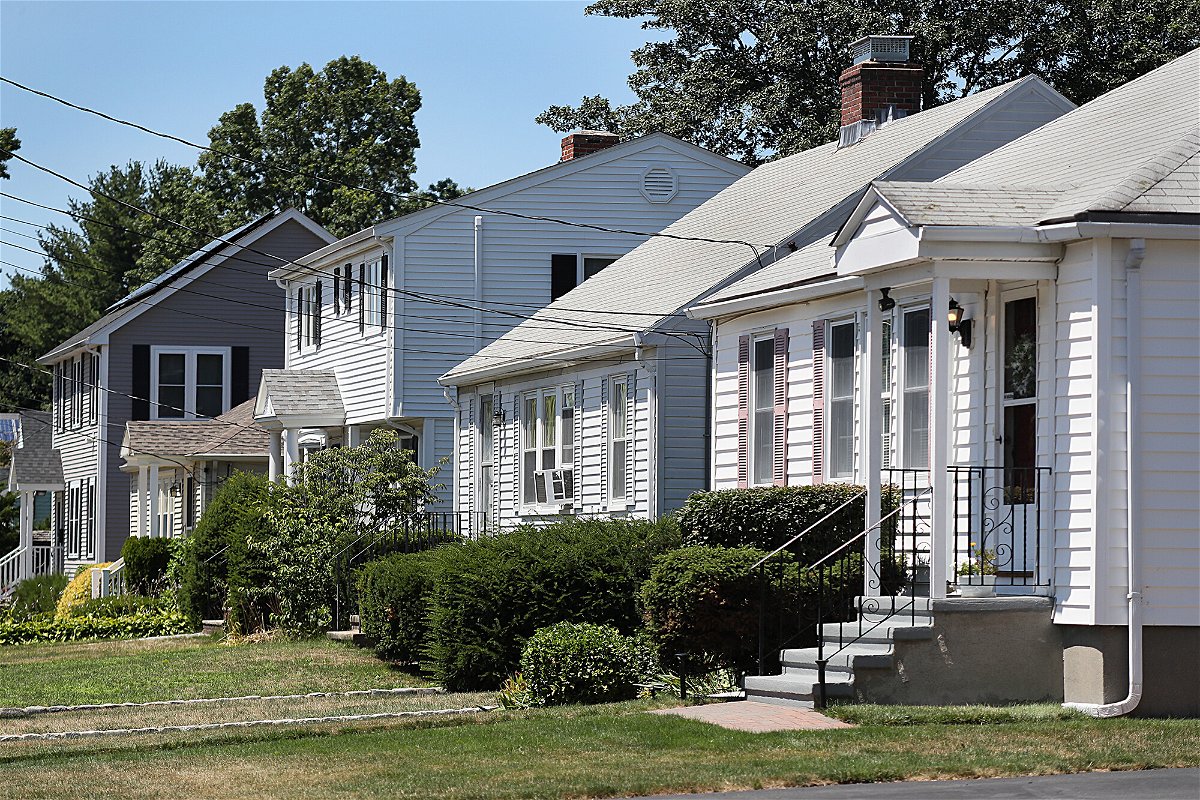Mortgage rates rise again after Fed says it will take ‘forceful’ steps to curb inflation

Single family homes are pictured on Colonial Drive in Arlington
By Anna Bahney, CNN Business
Mortgage rates continued to climb this week following comments by Federal Reserve Chairman Jerome Powell that the central bank is taking “forceful and rapid” steps to reduce inflation and slow the economy.
The 30-year fixed-rate mortgage averaged 5.66% in the week ending September 1, up from 5.55% the week before, according to Freddie Mac. That is significantly higher than this time last year when it was 2.87%.
After starting the year at 3.22%, mortgage rates rose sharply during the first half of the year, hitting a high of 5.81% in mid-June. But since then, concerns about the economy and the Federal Reserve’s mission to combat inflation have made them more volatile.
Rates had fallen in July and early August as recession fears took hold. But Powell’s comments during a speech last Friday refocused investors’ attention back on the central bank’s fight against inflation, pushing rates higher.
“The market’s renewed perception of a more aggressive monetary policy stance has driven mortgage rates up to almost double what they were a year ago,” said Sam Khater, Freddie Mac’s chief economist.
This is likely to further slow home sales and put downward pressure on prices.
“The increase in mortgage rates is coming at a particularly vulnerable time for the housing market as sellers are recalibrating their pricing due to lower purchase demand,” he said.
Mortgage rates climbed after the 10-year US Treasury climbed back to levels not seen since June.
The Federal Reserve does not set the interest rates mortgage borrowers pay directly, but its actions influence them. Instead, mortgage rates tend to track 10-year US Treasury bonds. As investors see or anticipate rate hikes, they often sell government bonds, which sends yields higher and, with it, mortgage rates.
“Financial markets continue to react to the Federal Reserve’s firm commitment to monetary tightening in order to bring inflation closer to the 2% mark,” said George Ratiu, Realtor.com’s manager of economic research.
As a result, he said homebuyers can expect mortgage rates to stay in the 5% to 6% range over the next few months. A combination of still-high inflation and the Fed’s increasing borrowing costs will keep them elevated.
A year ago, a buyer who put 20% down on a median priced $390,000 home and financed the rest with a 30-year, fixed-rate mortgage at an average interest rate of 2.87% had a monthly mortgage payment of $1,294, according to numbers from Freddie Mac.
Today, a homeowner buying the same-priced house with an average rate of 5.66% would pay $1,803 a month in principal and interest. That’s $509 more each month, according to numbers from Freddie Mac.
If there is a silver lining for those still looking for a home, it is that houses are staying on the market longer, pushing sellers to drop asking prices and leaving more room for negotiation, said Ratiu.
“As we move into the fall, and the pace of sales slows even further, some buyers may find discounts growing larger, offering opportunities that fit within their budgets,” he said.
The-CNN-Wire
™ & © 2022 Cable News Network, Inc., a Warner Bros. Discovery Company. All rights reserved.